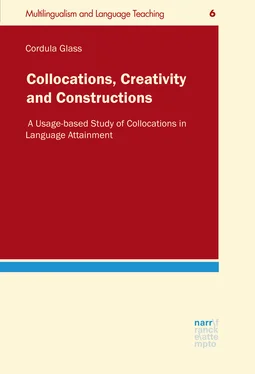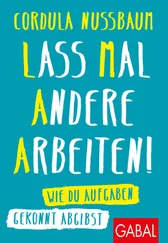A first, fundamental question is, at which level does semantic prosody operate? Since it is a phenomenon which has predominantly been studied for collocates of a node word, it might work on a combinatorial and syntagmatic as well as a variable, paradigmatic level. Hence, it could either be part of the extended meaning, or function, of a lexical unit (Partington 2004: 132–133) or belong to the overall features of a collocational sequence (Sinclair 2004: 35). The methodology behind most analyses suggests semantic prosody to be a property of a single lexical unit, since collocates of a node are searched for mutual aspects of meaning in order to find an overarching reading for the companions of the word. Yet, if semantic prosody is part of a word’s meaning, it would follow that this reading is always applicable, independent of the pattern in which a word is used. For pretty for example, the consequence would be that ‘somewhat female features’ are always implied, but this is only true for NPs, while [ pretty +Adj] instead triggers a reading of pretty as an intensifier similar to very , as in pretty obvious or pretty difficult . Of course, this reasoning only holds if [ pretty +N] and [ pretty +Adj] are seen as two different uses of the same lexical item. Thus, within an approach which regards both instances as separate entries in the mental lexicon, the implication of semantic prosody could well be interpreted as part of the word meaning. Chapters 4 and 7 will pick up on this question and discuss it against the background of a construction grammar dimension.
A second aspect in the scope of semantic prosody is its potentially binary nature. Initially, the phenomenon had been treated as the tendency of a node to co-occur with more positively or negatively charged collocates (Sinclair 1987b). Some approaches maintained this view, defining semantic prosody as a property with a binary quality (Partington 2004; Channell 2000; Louw 1993). Other researchers, such as Sinclair (1991: 110–115), argue for more diverse implications. Take again the example of [ pretty +N]: assuming that the choice of pretty as a premodification does indeed influence the interpretation of a [N] as in sentences (1), and (16) to (19)5, a primary division into an either positive or negative reading, it would follow that ‘somewhat female features’ are either good or bad. But, while examples (18) and (19) might have negative implications, neither (16) nor (17) or even the more creative (1) convey a bad or even rude meaning. So, unless one wishes to postulate an additional binary division into male/female, a more detailed description of an item’s semantic prosody might be more useful for a fruitful interpretation of this kind of additional level of meaning.
The third and probably most complex question concerns the pervasiveness of semantic prosody. This aspect falls into two subcategories: pervasiveness within genre or discourse-related context and pervasiveness outside a certain context. In short, the question here is about the exact scale of semantic prosody. Within a certain context, Partington (2004), for example, reasoned there might be instances which are more prone to a reading along the lines of their semantic prosody than others, while Sinclair (2004) would argue that semantic prosody is an obligatory property which, if it can be observed, holds for all instances within a sequence. In this case, this feature would trigger a certain reading in any given context. Whitsitt (2005), however, challenged this position, observing that while [ cause +NP] yields a negative interpretation for the filling of the [NP] in a genre like ‘news’, the same pattern has instead a neutral reading in academic publications. Applying these observations to the example of [ pretty +N], this would imply that the reading of ‘somewhat female features’ applies to all kinds of nouns, irrespective of the [N] as such or the context in which it occurs. Interestingly, as the examples in chapter 1 showed, this interpretation carries into various contexts such as literature, media or everyday conversation. Yet, while applicable to quite a few, even less expected [N]s such as face , man or boy , not every noun seems to embrace the underlying reading of ‘somewhat female features’ with the same vigour. In connection with a noun-collocate referring to a human being, this relation holds quite well, and even for animals, as in (20), pretty and handsome appear to be used within a female or male context respectively. However, comparing the effect of the premodifications pretty and handsome on inanimate [N] referents, the picture becomes hazier. For sentences (21) and (22) it already takes some imaginative effort to construe a more female or male reading; in these cases, a pretty house actually seems to be the more common and neutral expression, whereas a handsome house might have a kind of pretentious grandeur to it. It is highly questionable though whether this is because women are more frequently associated with the interior, domestic domain while men’s sphere is claimed to be the outside world of business and politics. Neither would it explain the derogatory tone in (23) nor why there are only very few hits for pretty + landscape and none for handsome + landscape in the whole of the BNC.
| (20) |
BNC A17 1047 |
Competitions for the most handsome dog and prettiest bitch need no explanation. |
| (21) |
BNC H7H 505 |
It was a pretty house too; being built beside beautiful entrance gates, gates hinged to cut stone posts, dignified as pillars in a temple, gate lodges were designed with appropriate distinction. |
| (22) |
BNC HGY 371 |
Because although it's a handsome house, and the gardens are extensive, they in no way compare to those of the castle which is just up the road. |
| (23) |
BNC CHH 375 |
Each turn along the coast path reveals a beautiful sandy cove, or jagged rocks giving lie to the notion that this is just a pretty landscape. |
In example (23), however, the choice of just also seems to contribute to the slightly negative reading of pretty landscape . This indicates that semantic prosody might also be influenced by other lexical as well as structural factors, as for example Klotz (1997) shows for the case of cause . Nevertheless, these examples show that semantic prosody can be regarded as a rather pervasive feature, although there are also items which refuse to be coerced into a certain interpretation. At the same time, the fact that phrases like pretty creature or pretty boy receive an implicit female interpretation through their analogy to pretty woman is difficult to deny. To shed some more light onto these apparently contradictory tendencies, it might be useful to explore where semantic prosody comes from in the first place.
Louw, for example, speculates that the “prosodic aura of meaning” develops through a period of diachronic change (Louw 1993: 164) and Bublitz (1996) too believes that over time and through repetitive use, “the word adopts semantic features from an adjacent item” (Bublitz 1996: 11). Yet, the concept of a formal sequence of items, which is closely linked to a certain semantic or functional dimension of meaning, has also been one of the main topics within cognitive linguistics. In fact, the idea of form-function pairings which operate on every linguistic level constitutes part of the basis of cognitive, usage-based approaches, like emergentist approaches (> 4.2.1), Complex Adaptive Systems (> 4.3.3) or construction grammar6 (> 4.3.1). Like semantic prosody within corpus linguistics, attempts to view phraseological phenomena such as collocations as a combination of form and meaning were part of cognitive linguistic approaches from a very early stage on. Initial studies within this, then fairly new, field of linguistics, such as Lakoff’s (1990) survey of the different constructions of there , or Fillmore, Kay and O’Connor’s (1988) report on the construction let alone , quintessentially dealt with phraseological chunks and their function within a text or discourse. However, very often this meant that a sequence of words, like let alone, was assigned a rather idiomatic meaning. Basically, it resulted in treating these items as a kind of more or less fixed multi-word unit. Later, research on phraseological items with respect to different groups of speakers was able to show that this kind of idiomatic meaning is not necessarily available to every native speaker at any time. In Nippold and Duthie’s (2003) research study on idiom comprehension in school-age children and adults, for example, children aged 12 still experience difficulties in detecting all levels of idiomatic meaning, which indicates that the inventory of phraseological items might be subject to a kind of acquisitional process. In addition, Wray (1999: 222) believes that “[t]he increasing automatisation of language […] is marked by a switch from a preference for literal interpretations of standard formulaic sequences (e.g. she has him eating out of her hand ) to their metaphorical counterparts, a process which is not complete until late teenage […]” (> 4.3.2).
Читать дальше








![Chade-Meng Tan - Search Inside Yourself - Increase Productivity, Creativity and Happiness [ePub edition]](/books/703803/chade-thumb.webp)



